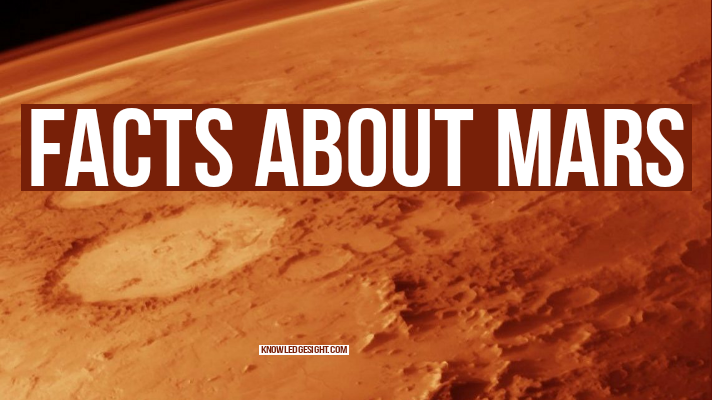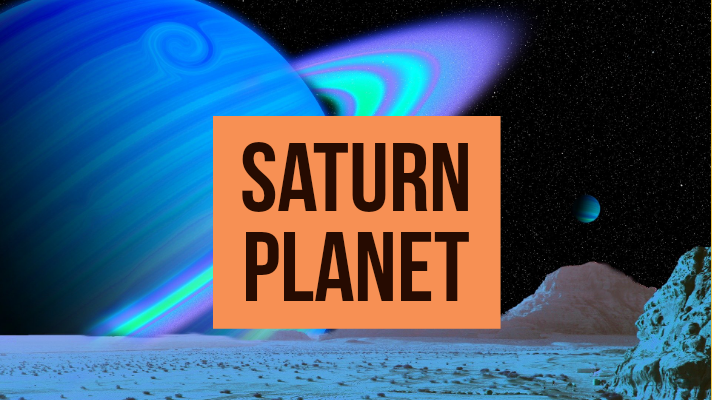neptune planet facts
Neptune is named for the Roman god of the sea, who is identifi ed with the Greek deity Poseidon, a son of the Titan Cronus (the Roman god Saturn) and a brother of Zeus (the Roman god Jupiter). It is the second planet to have been found by means of a telescope. Its discovery in 1846 was a remarkable combination of the application of solid Newtonian physics and a belief in a numerological scheme that later proved to be scientifi cally unfounded. Neptune’s orbit is almost perfectly circular; as a result, its distance from the Sun varies comparatively little over its nearly 164-year period of revolution. Although the dwarf planet Pluto’s mean distance from the Sun is greater than Neptune’s, its orbit is so eccen- tric (elongated) that for about 20 years of each revolution Pluto is actually nearer the Sun than is Neptune.
Neptune is almost four times the size of Earth but slightly smaller than Uranus, which makes it the smallest in diameter of the four giant, or Jovian, planets. It is more massive than Uranus, however, having a density roughly 25 percent higher. Like the other giant planets, Neptune consists primarily of hydrogen, helium, water, and other volatile compounds, along with rocky material, and it has no solid surface. It receives less than half as much sunlight as Uranus, but heat escaping from its interior makes Neptune slightly warmer than Uranus.
The heat liberated may also be responsible for the storminess in Neptune’s atmo- sphere, which exhibits the fastest winds seen on any planet in the solar system.
Neptune has 13 moons (natural satellites), only two of which had been discovered before the Voyager 2 space- craft flew past the planet in 1989, and a system of rings, which had been uncon- firmed until Voyager’s visit. As is the case for Uranus, most of what astrono- mers know about Neptune, including its rotation period and the existence and characteristics of its magnetic field and magnetosphere, was learned from a single spacecraft encounter. In recent years new knowledge of the Neptunian system has come as a result of advances in Earth-based observational technology.
Neptune’s orbital period of 163.72 years means that by mid-2010 it will have cir- cled the Sun only once since its discovery in September 1846. Consequently, astron- omers expect to be making refinements in calculating its orbital size and shape well into the 21st century. Voyager 2’s encounter with Neptune resulted in a small upward revision of the planet’s esti- mated mean distance from the Sun, which is now thought to be 4,498,250,000 km (2,795,083,000 miles). Its orbital eccen- tricity of 0.0086 is the second lowest of the planets; only Venus’s orbit is more circular. Neptune’s rotation axis is tipped toward its orbital plane by 29.6°, some- what larger than Earth’s 23.4°. As on Earth, the axial tilt gives rise to seasons on Neptune, and, because of the circularity of Neptune’s orbit, the seasons (and the seasons of its moons) are of nearly equal length, each nearly 41 years in duration.
The atmosphere
Like the other giant planets, Neptune’s
outer atmosphere is composed predomi-
nantly of hydrogen and helium. Near the
one-bar pressure level in the atmosphere,
these two gases contribute nearly 98 per-
cent of the atmospheric molecules. Most
of the remaining molecules consist of
methane gas. Hydrogen and helium are
nearly invisible, but methane strongly
absorbs red light. Sunlight reflected off
Neptune’s clouds therefore exits the
atmosphere with most of its red colours
removed and so has a bluish cast.
Although Uranus’s blue-green colour is
also the result of atmospheric methane,
Neptune’s colour is a more vivid, brighter
blue, presumably an effect of the pres-
ence of an unidentified atmospheric gas.
The temperature of Neptune’s atmo-
sphere varies with altitude. A minimum
temperature of about 50 kelvins (K; −370
°F, −223 °C) occurs at a pressure near 0.1
bar. The temperature increases with
decreasing pressure—i.e., with increasing
altitude—to about 750 K (890 °F, 480 °C)
at a pressure of a hundred-billionth of a
bar, which corresponds to an altitude of
2,000 km (1,240 miles) as measured from
the one-bar level, and it remains uniform
above that altitude. Temperatures also
increase with increasing depth below the
0.1-bar level to about 7,000 K (12,000 °F,
6,700 °C) near the centre of the planet,
where the pressure may reach five
megabars. The total amount of energy
radiated by Neptune is equivalent to that
of a nonreflecting sphere of the same size
with a uniform temperature of 59.3 K
(−353 °F, −214 °C). This temperature is
called the effective temperature.
Neptune is more than 50 percent
farther from the Sun than is Uranus and
so receives less than half the sunlight of
the latter. Yet the effective temperatures
of these two giant planets are nearly
equal. Uranus and Neptune each reflect—
and hence also must absorb—about the
same proportion of the sunlight that
reaches them. As a result of processes not
fully understood, Neptune emits more
than twice the energy that it receives
from the Sun. The added energy is gener-
ated in Neptune’s interior. Uranus, by
contrast, has little energy escaping from
its interior.
Moons
Prior to Voyager 2’s encounter, Neptune’s
only known moons were Triton, discov-
ered visually through a telescope in
October 1846 by English astronomer
William Lassell shortly after the discov-
ery of Neptune, and Nereid, discovered in
telescopic photographs more than a cen-
tury later in 1949 by American astronomer
Gerard Kuiper. In 1989, Voyager’s obser-
vations added six previously unknown
moons to Neptune’s system. All are less
than half of Triton’s distance from
Neptune and are regular moons—i.e., they
travel in prograde, nearly circular orbits
that lie near Neptune’s equatorial plane.
These moons are probably synchronous
rotators; that is, their rotational and
orbital periods are the same.
In 2002–03, five additional tiny
moons, estimated to be about 15–30 km
(9–18 miles) in radius, were discovered in
Earth-based observations. These are
irregular, having highly eccentric orbits
that are inclined at large angles to the
planet’s equator; three also orbit in the
retrograde direction. Their mean dis-
tances from Neptune lie roughly between
15 million and 48 million km (9 million
and 30 million miles), well outside the
orbit of Nereid.
The Ring System
Evidence that Neptune has one or more
rings arose in the mid-1980s when stellar
occultation studies from Earth occasion-
ally showed a brief dip in the star’s
brightness just before or after the planet
passed in front of it. Because dips were
seen only in some studies and never sym-
metrically on both sides of the planet,
scientists concluded that any rings pres-
ent do not completely encircle Neptune
but instead have the form of partial rings,
or ring arcs.
Images from Voyager 2, however,
revealed a system of six rings, each of
which in fact fully surrounds Neptune.
The putative arcs turned out to be bright
regions in the outermost ring, named
Adams, where the density of ring parti-
cles is particularly high. Although rings
also encircle each of the other three giant
planets, none displays the striking
clumpiness of Adams. The arcs are found
within a 45° segment of the ring. From
leading to trailing, the most prominent
are named Courage, Liberté, Egalité 1,
Egalité 2, and Fraternité. They range in
length from about 1,000 km (600 miles)
to more than 10,000 km (6,000 miles).
Although the moon Galatea, which orbits
just planetward of the inner edge of
Adams, may gravitationally interact with
the ring to trap ring particles temporar-
ily in such arclike regions, collisions
between ring particles should eventually
spread the constituent material relatively
uniformly around the ring. Consequently,
it is suspected that the event that
supplied the material for Adams’s enig-
matic arcs—perhaps the breakup of a
small moon—occurred within the past
few thousand years.
The other five known rings of
Neptune—Galle, Le Verrier, Lassell,
Arago, and Galatea, in order of increas-
ing distance from the planet—lack the
nonuniformity in density exhibited by
Adams. Le Verrier, which is about 110 km
(70 miles) in radial width, closely resem-
bles the nonarc regions of Adams. Similar
to the relationship between the moon
Galatea and the ring Adams, the moon
Despina orbits Neptune just planetward
of the ring Le Verrier. Each moon may
gravitationally repel particles near the
inner edge of its respective ring, acting as
a shepherd moon to keep ring material
from spreading inward.
Galle, the innermost ring, is much
broader and fainter than either Adams
or Le Verrier, possibly owing to the
absence of a nearby moon that could
provide a strong shepherding effect.
Lassell consists of a faint plateau of ring m
that extends outward from Le Verrier about
halfway to Adams. Arago
is the name used to distinguish a nar-
row, relatively bright region at the outer
edge of Lassell. Galatea is the name gen-
erally used to refer to a faint ring of
material spread all along the orbit of the
moon Galatea.
Neptune’s discovery
Neptune is the only giant planet that is
not visible without the aid of a telescope.
Having an apparent magnitude of 7.8, it is
approximately one-fifth as bright as the faintest stars visible to the unaided eye.
Hence, it is fairly certain that there were
no observations of Neptune prior to the
use of telescopes. Galileo is credited as
the first person to view the heavens with
a telescope in 1609. His sketches from a
few years later, the first of which was
made on Dec. 28, 1612, suggest that he
saw Neptune when it passed near Jupiter
but did not recognize it as a planet.
Prior to the discovery of Uranus by
the English astronomer William Herschel
in 1781, the consensus among scientists
and philosophers alike was that the plan-
ets in the solar system were limited to
six—Earth plus those five planets that had
been observed in the sky since ancient
times. Knowledge of a seventh planet
almost immediately led astronomers and
others to suspect the existence of still
more planetary bodies. Additional impe-
tus came from the mathematical curiosity
known as Bode’s law.
Some astronomers were so impressed
by the seeming success of Bode’s law in
explaining the distances of Ceres and
Uranus that they proposed the name
Ophion for the large planet that the law
told them must lie beyond Uranus, at a
distance of 38.8 AU.
In addition to this scientifically
unfounded prediction, observations of
Uranus provided actual evidence for the
existence of another planet. Uranus was
not following the path predicted by
Newton’s laws of motion and the gravita-
tional forces exerted by the Sun and the
known planets. Furthermore, more than 20 recorded prediscovery sightings of
Uranus dating back as far as 1690 dis-
agreed with the calculated positions of
Uranus for the respective time at which
each observation was made. It appeared
possible that the gravitational attraction
of an undiscovered planet was perturbing
the orbit of Uranus.
In 1843 the British mathematician
John Couch Adams began a serious
study to see if he could predict the loca-
tion of a more distant planet that would
account for the strange motions of
Uranus. Adams communicated his results
to the astronomer royal, George B. Airy,
at Greenwich Observatory, but they
apparently were considered not precise
enough to begin a reasonably concise
search for the new planet. In 1845 Urbain-
Jean-Joseph Le Verrier of France, unaware
of Adams’s efforts in Britain, began a sim-
ilar study of his own.
By mid-1846 the English astronomer
John Herschel, son of William Herschel,
had expressed his opinion that the math-
ematical studies under way could well
lead to the discovery of a new planet. Airy,
convinced by Herschel’s arguments,
proposed a search based on Adams’s cal-
culations to James Challis at Cambridge
Observatory. Challis began a systematic
examination of a large area of sky sur-
rounding Adams’s predicted location.
The search was slow and tedious because
Challis had no detailed maps of the dim
stars in the area where the new planet
was predicted. He would draw charts of
the stars he observed and then compare them with the same region several nights
later to see if any had moved.
Le Verrier also had difficulty convinc-
ing astronomers in his country that a
telescopic search of the skies in the area
he predicted for the new planet was not a
waste of time. On Sept. 23, 1846, he com-
municated his results to the German
astronomer Johann Gottfried Galle at
the Berlin Observatory. Galle and his
assistant Heinrich Louis d’Arrest had
access to detailed star maps of the sky
painstakingly constructed to aid in the
search for new asteroids. Galle and
d’Arrest identified Neptune as an
uncharted star that same night and veri-
fied the next night that it had moved
relative to the background stars.
Later observations
from Earth
Earth-based observations of Neptune
before Voyager 2’s flyby suffered greatly
as a consequence of the planet’s enor-
mous distance from both Earth and the
Sun. Its average orbital radius of 30.1 AU
means that the sunlight reaching its
moons and its upper atmosphere is
barely 0.1 percent as bright as that at
Earth. Pre-Voyager telescopic viewing of
Neptune through the full thickness of
Earth’s atmosphere could not resolve fea-
tures smaller than about one-tenth of
Neptune’s diameter, even under the best
observing conditions. Most such obser-
vations concentrated on determining
Neptune’s size, mass, density, and orbital
parameters and searching for moons. In
the early 21st century specialized inter-
ferometric techniques have routinely
improved spatial resolution of distant
objects by factors of 10–100 over earlier
surface-based observations.
Spacecraft exploration
Voyager 2 is the only spacecraft to have
encountered the Neptunian system. This
spacecraft and its twin, Voyager 1—both
launched in 1977—originally were slated
to visit only Jupiter and Saturn, but the
timing of Voyager 2’s launch gave its tra-
jectory the leeway needed for the
spacecraft to be redirected, with a gravity
assist from Saturn, on extended missions
to Uranus and then to Neptune.
Voyager 2 flew past Neptune and its
moons on Aug. 24–25, 1989, observing the
system almost continuously between
June and October of that year. It mea-
sured the planet’s radius and interior
rotation rate and detected its magnetic
field, determining that the latter is both
highly inclined and offset from the
planet’s rotation axis. It confirmed that Neptune has rings and discovered six new
moons. Neptune previously had been
thought too cold to support active weather
systems, but Voyager’s images of the
planet revealed the highest atmospheric
winds seen in the solar system and several
large-scale storms, one the size of Earth.
Because Neptune was Voyager 2’s
last planetary destination, mission scien-
tists risked sending the spacecraft closer
to it than to any other planet during the
mission. Voyager passed about 5,000 km
(3,100 miles) above Neptune’s north pole.
A few hours later it passed within 40,000
km (24,800 miles) of Triton, which allowed
it to gather high-resolution images of the
moon’s highly varied surface as well as
precise measurements of its radius and
surface temperature. As of 2009, no future
missions to Neptune are planned.













[…] Neptune – Interesting Facts about Planet Neptune […]
[…] Neptune – Interesting Facts about Planet Neptune […]